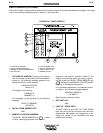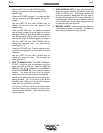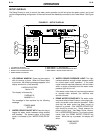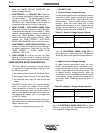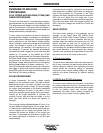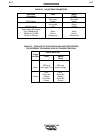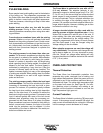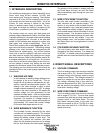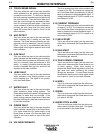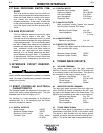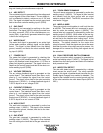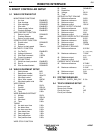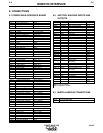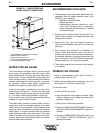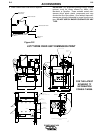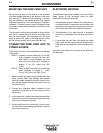
2.3 TOUCH SENSE SIGNAL
This is an active low input to the robot controller
which indicates that the welding electrode has
touched the work piece. To start touch sensing
the touch sensing command must be held low by
the robot controller. Then the Power Wave mon-
itors the current through the electrode to deter-
mine if it is touching the work piece. If the touch
sense command is held low and the electrode is
touching the work piece then the touch sense
signal will be held low to report a “touch” to the
robot controller.
2.4 ARC DETECT
This is an active low input to the robot controller
which indicates that a welding arc has been
detected. The Power Wave monitors the arc volt-
age and current to determine if an arc is estab-
lished. If an arc is not established then the arc
detect signal is held high to report an error to the
robot controller.
2.5 GAS FAULT
This is an active low input to the robot controller
which indicates that the shielding gas is missing.
The Power Wave has external connections avail-
able for a normally open gas pressure or flow
switch. If a switch is installed and the gas fault
function is enabled then gas loss errors will be
reported to the robot controller.
2.6 WIRE FAULT
This is an active low input to the robot controller
which indicates a wire feeding problem or the
lack of welding wire. This signal is not connect-
ed in the Power Wave.
2.7 WATER FAULT
This is an active low input to the robot controller
which indicates a water cooling problem. The
Power Wave monitors the water cooling pressure
to decide if a water fault has occurred. If the
water cooling pressure drops below 5-8psi then
the water fault signal is held low to report an error
to the robot controller.
2.8 POWER FAULT
This is an active low input to the robot controller
which indicates a power fault in the Power Wave.
If for some reason the 15V power supply in the
Power Wave is below 15V then the power fault
signal is held low to report an error to the robot
controller.
2.9 VOLTAGE FEEDBACK
This is an analog input to the robot controller with
a range of 0 to 10V. The internal arc voltage sig-
nal in the Power Wave is multiplied by 2 and iso-
lated to produce the voltage feedback signal. A
voltage feedback signal of 7.620V is equal to an
arc voltage of 80.0V.
2.10 CURRENT FEEDBACK
This is an analog input to the robot controller with
a range of 0 to 10V. The internal arc current sig-
nal in the Power Wave is multiplied by 4 and iso-
lated to produce the current feedback signal. A
current feedback signal of 8.317V is equal to an
arc current of 750A.
2.11 WELD START
This is an active low output from the robot con-
troller which commands the Power Wave to start
an arc.
2.12 GAS START
This is an active low output from the robot con-
troller which commands the Power Wave to open
the shielding gas solenoid.
2.13 TOUCH SENSE COMMAND
This is an active low output from the robot con-
troller which commands the Power Wave to turn
on touch sensing. When touch sensing is
enabled the Power Wave regulates a pulse volt-
age wave form while monitoring the current
through the electrode. If current flows through
the electrode then the touch sense signal is held
low to report a “touch” to the robot controller.
2.14 WIRE+
This is an active low output from the robot con-
troller which commands the Power Wave to cold
inch wire at 80 IPM.
2.15 WIRE-
This is an active low output from the robot con-
troller which commands the Power Wave to cold
inch wire at -80 IPM.
2.16 WIRE STICK ALARM
This is an active low output from the robot con-
troller used to indicate a wire stick. This signal
is not connected in the Power Wave.
ROBOTIC INTERFACE
C-2 C-2
POWER WAVE 450
APR97



